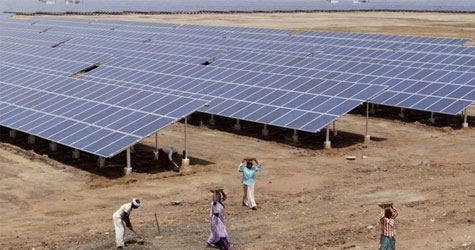India's Ministry of New and Renewable Energy released data showing that as of June's end, the country had installed 1,030.66 megawatts or over 1 gigawatt of solar photovoltaic power.
Ironically, this announcement was followed by one of the worst blackouts in more than a decade. According to Reuters, grid failure in Northern India left more than 300 million people without power on Monday, July 30th.
While this blackout was the worst in recent years, India suffers from power outages frequently, to the point where it has slowed the developing nation’s economic growth. India relies on coal for two-thirds of its power generation. However, most of the coal in India is controlled by Coal India, a government-based group that struggles to meet electricity demand because of corruption and weak policies. In fact, the gap between electricity supply and demand is about 10%.
These electricity shortages in India have created an opportunity for solar energy. The country’s solar initiative, called the National Solar Mission, aims to install 20 GW of capacity by 2020. Their efforts have already caused solar prices to drop, and experts believe that it might achieve price parity with coal as early as 2016.
The Jawaharlal Nehru National Solar Mission, the Indian government’s three-phase plan to install 1 to 2 GW of solar power by 2013, 4 to 10 GW between 2013 and 2017, and 20 GW by 2022. The solar power will be a mix of solar photovoltaic and concentrated solar power.
The National Solar Mission has proven extremely successful thus far. In fact, the MNRE’s target was 800 MW of installed capacity by the end of 2012, but the nation had already surpassed this goal by the mid-year mark.
Additionally, the Natural Resources Defense Council and the Council on Energy, Environment and Water which is based in New Delhi, published a report earlier this year, which said that India had a total of 506.9 megawatts of installed capacity at the end of March 2012. This means that solar capacity in India has almost doubled in just two months.
In fact, only 17.8 MW of solar were installed in the country in early 2010, showing the National Solar Mission’s significant impact on the market. Between early 2010 and March 2012, the price of solar energy in India dropped to as little as INR 7.49 per kilowatt hour or USD 0.15 USD/kWh. Much of this price decrease is due to the National Solar Mission’s reverse auction bidding process, which awarded solar projects to companies with the lowest asking price. This price drop in Indian solar power means that solar could achieve price parity with coal or natural gas by 2016.
The National Solar Mission and the resultant growth of solar capacity in India has and will add job opportunities for solar installers and manufacturers.
In fact, the NRDC and CEEW reported that a lack of skilled labor remains a barrier to solar growth in India. This means that professionals who have or seek solar installer training and certification could have an advantage in applying for solar installer jobs in India. For example, the North American Board for Certified Energy Practitioners offers solar installer certifications for professionals interested in employment in the industry.
Source – www.green buildings.com
Share your industry press now!
Are you a PR agency or sustainability-focused organization? Join the World of Renewables network FREE today and gain exclusive access to our platform to promote your business, share the latest industry news, and connect with a global audience of 700,000+ renewable energy professionals.
Register Now to start posting your updates and showcase your expertise to a highly engaged, environmentally-conscious community.
Find out more about our Content Partnership Programs.*2024 AWARD WINNER* Websites & Mobile Sites, Webby Winner, Peoples Voice 2024












